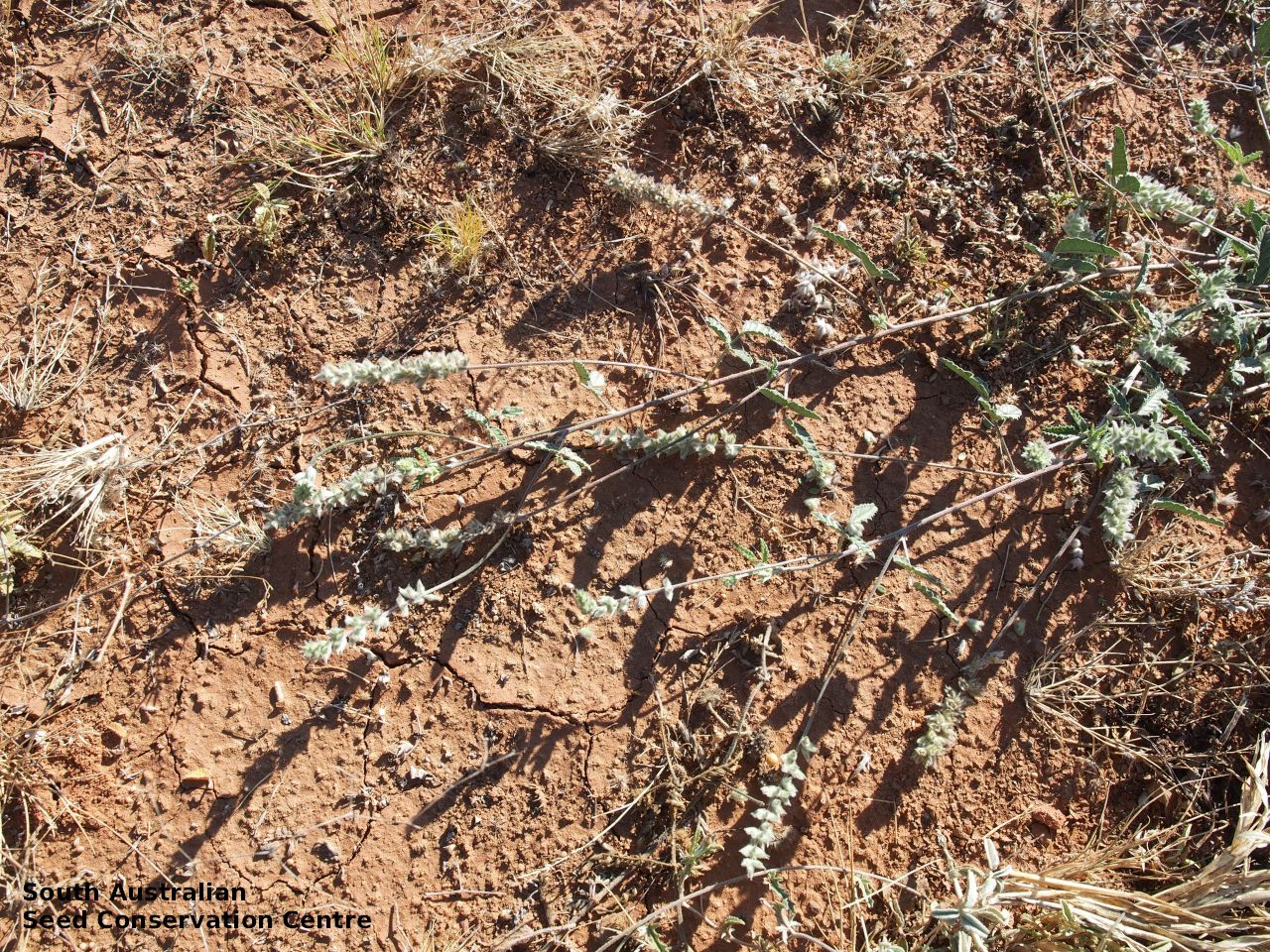
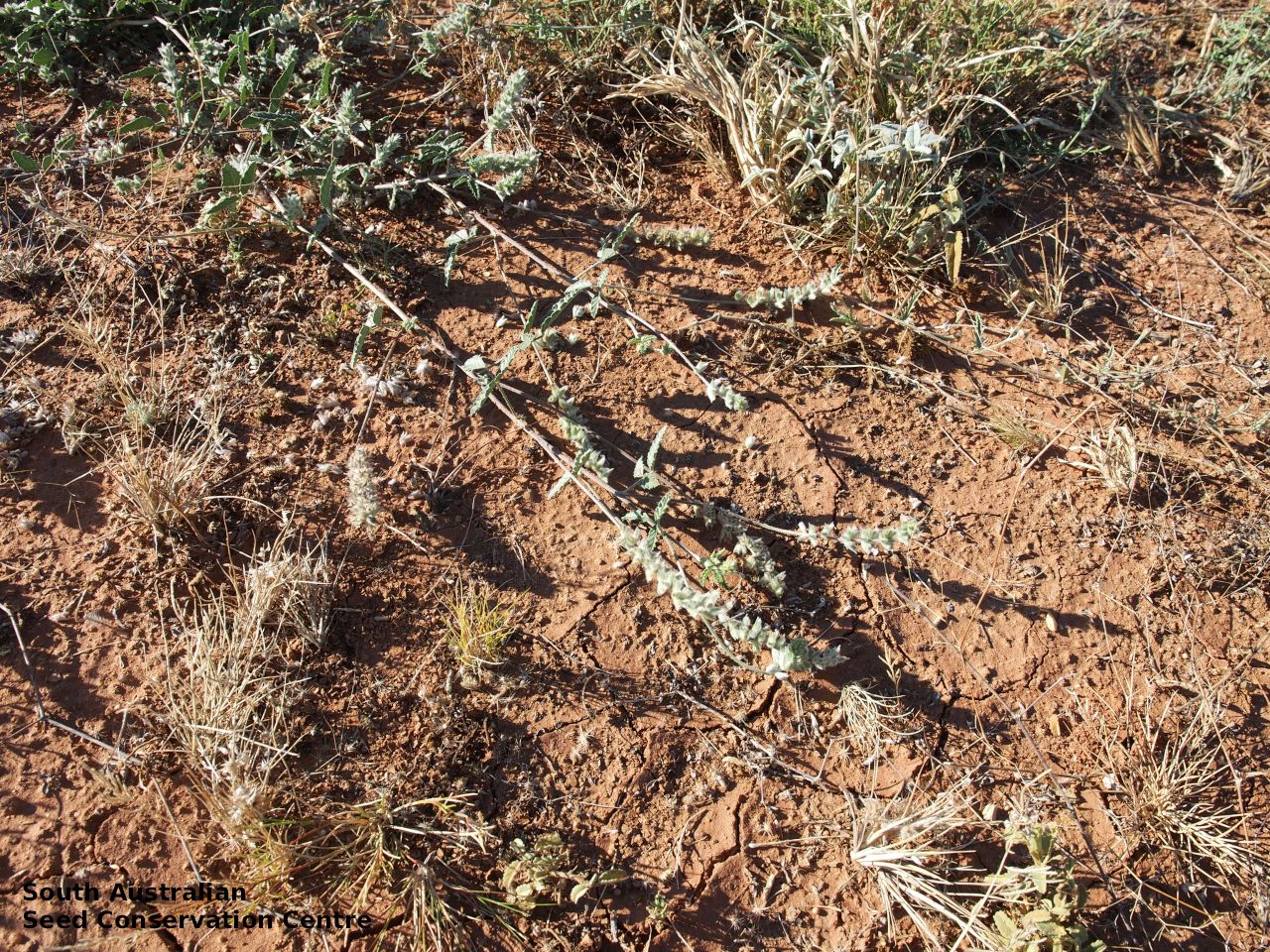
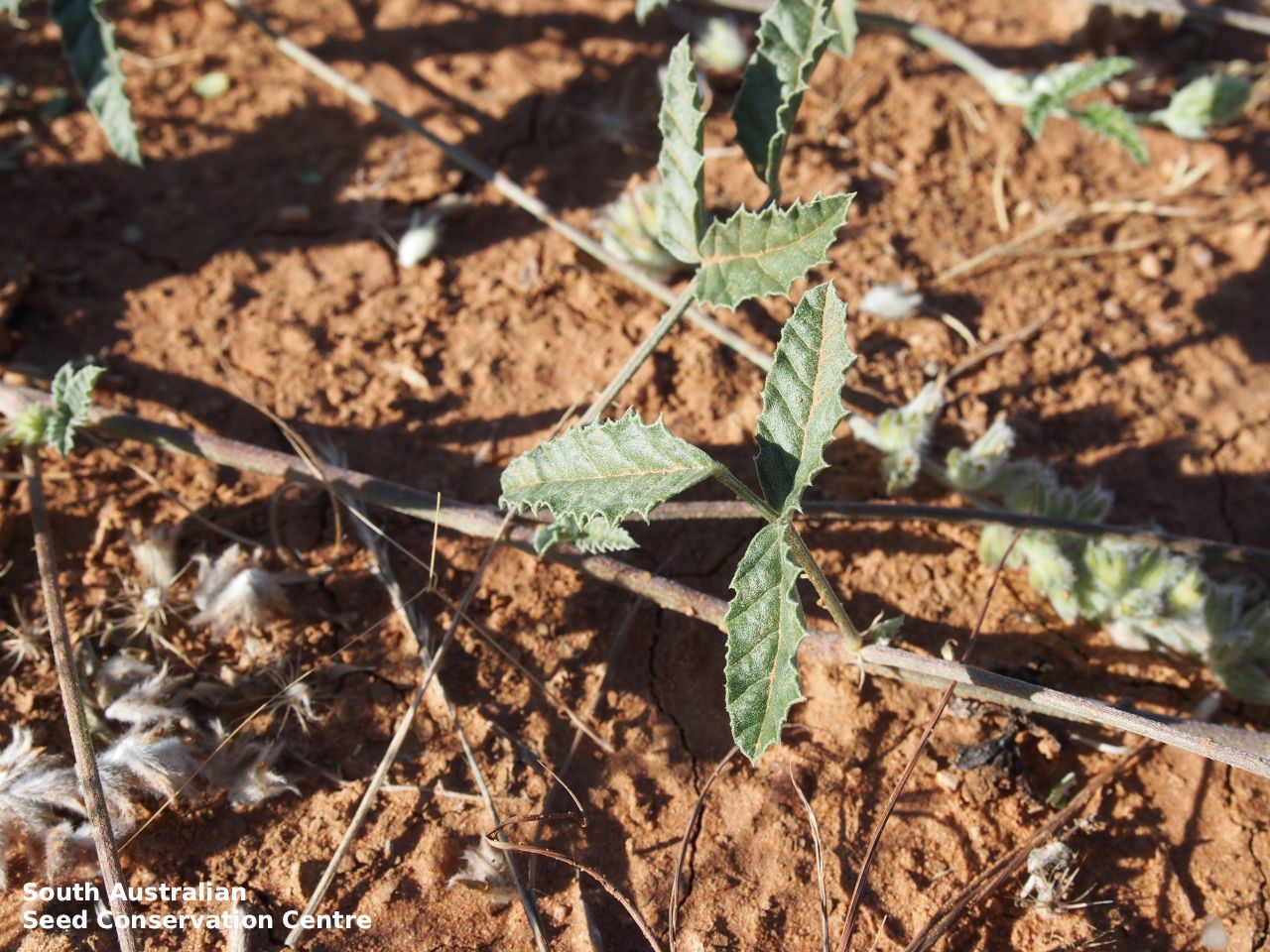
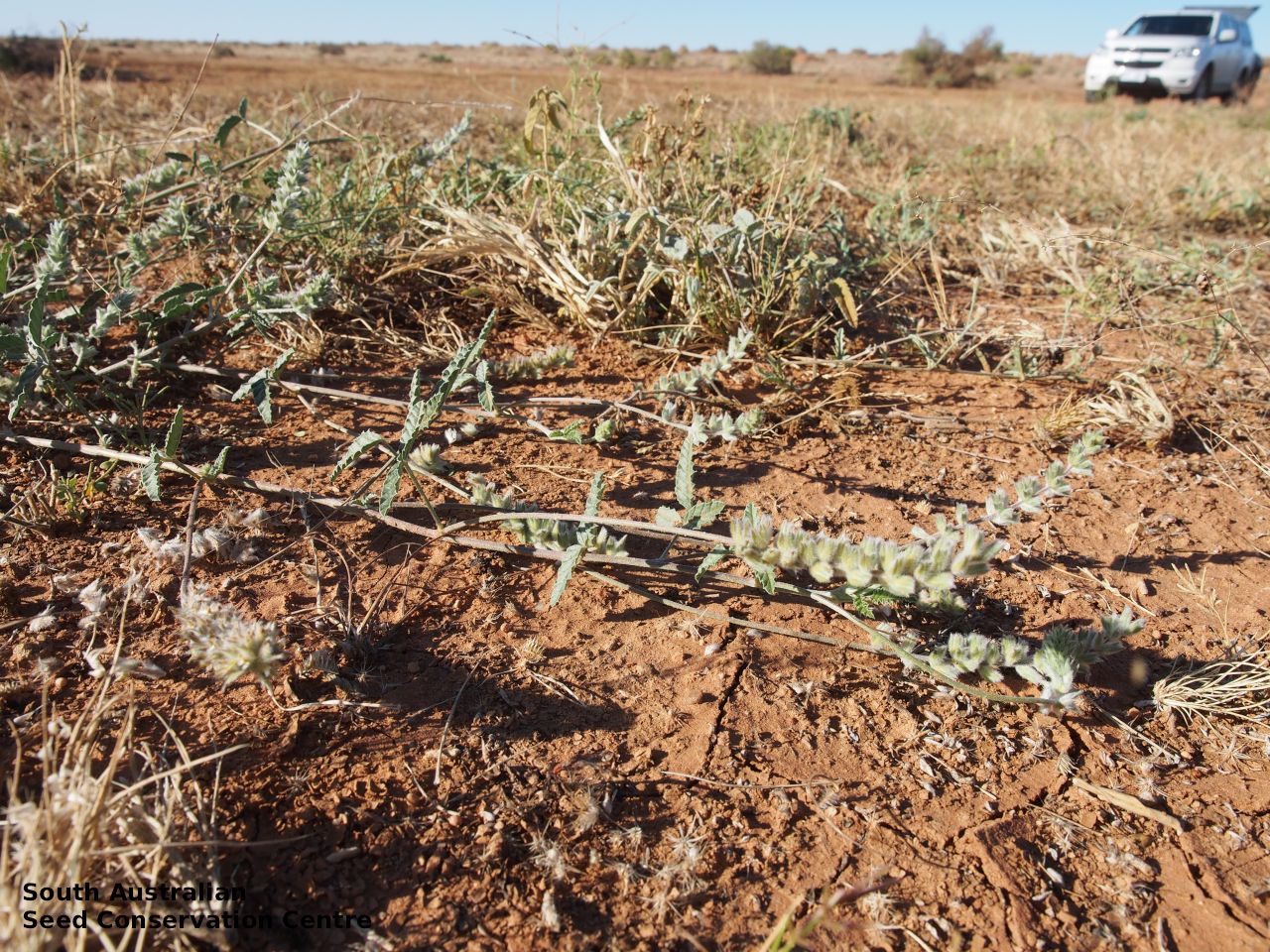
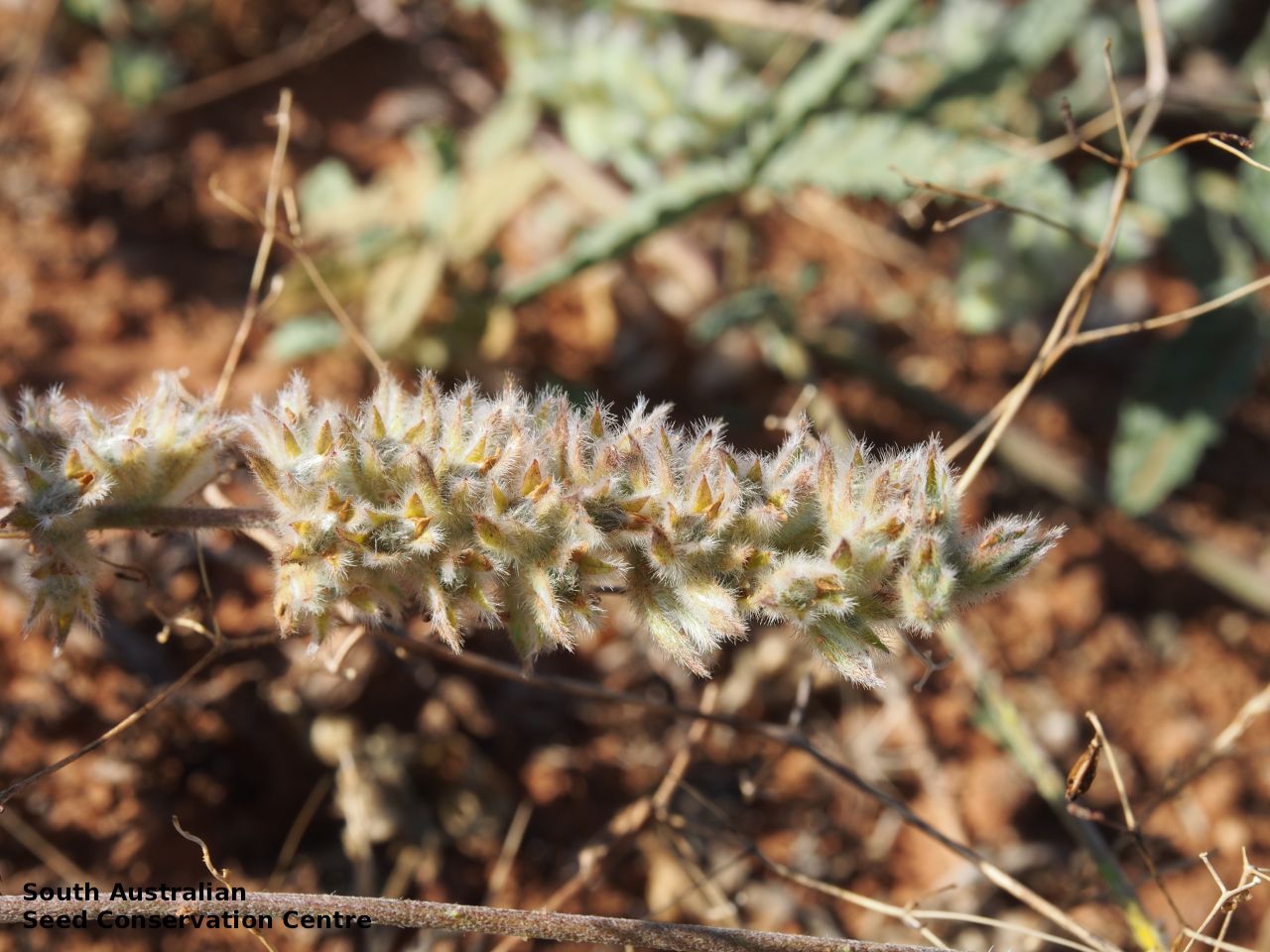
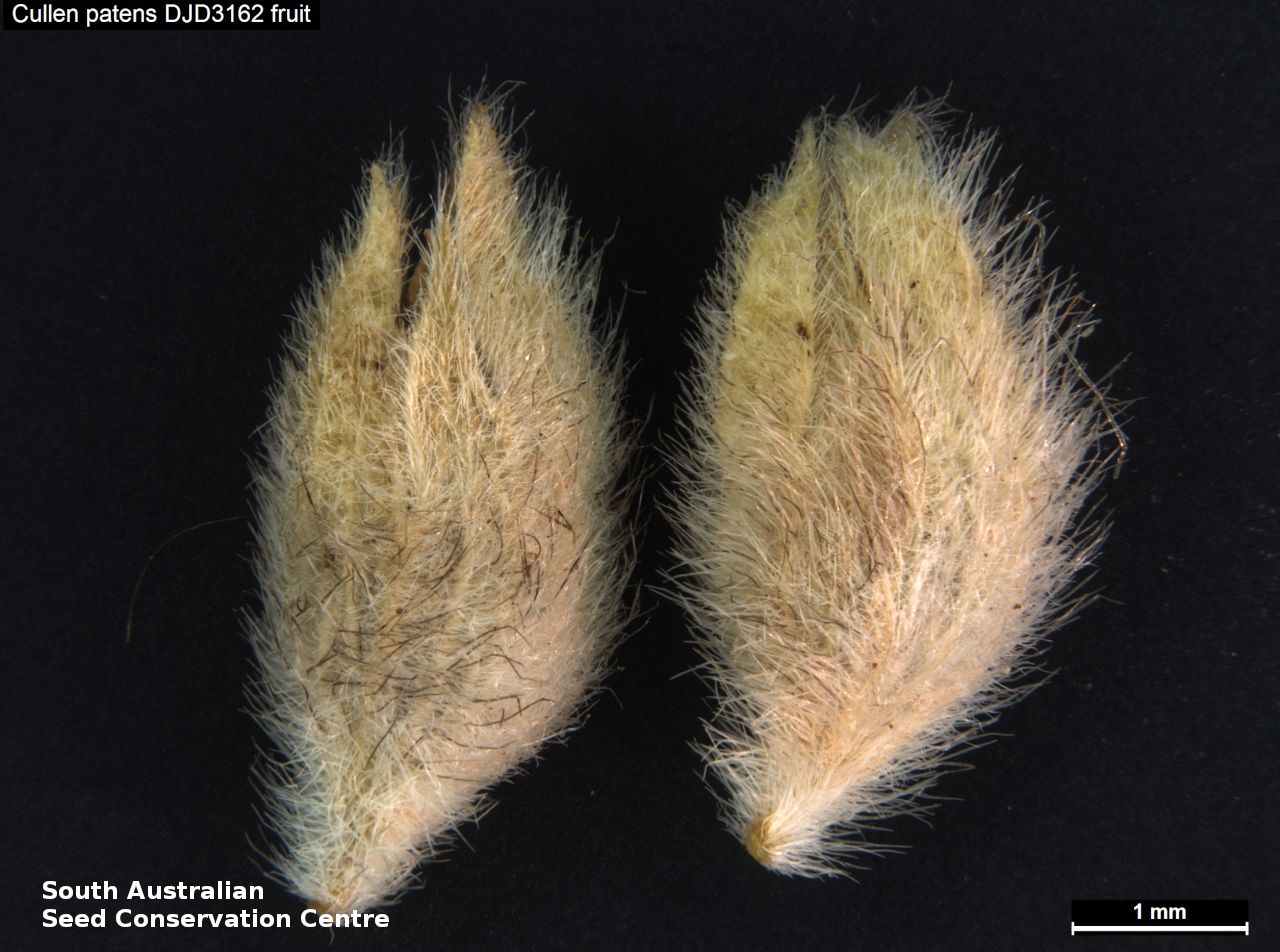
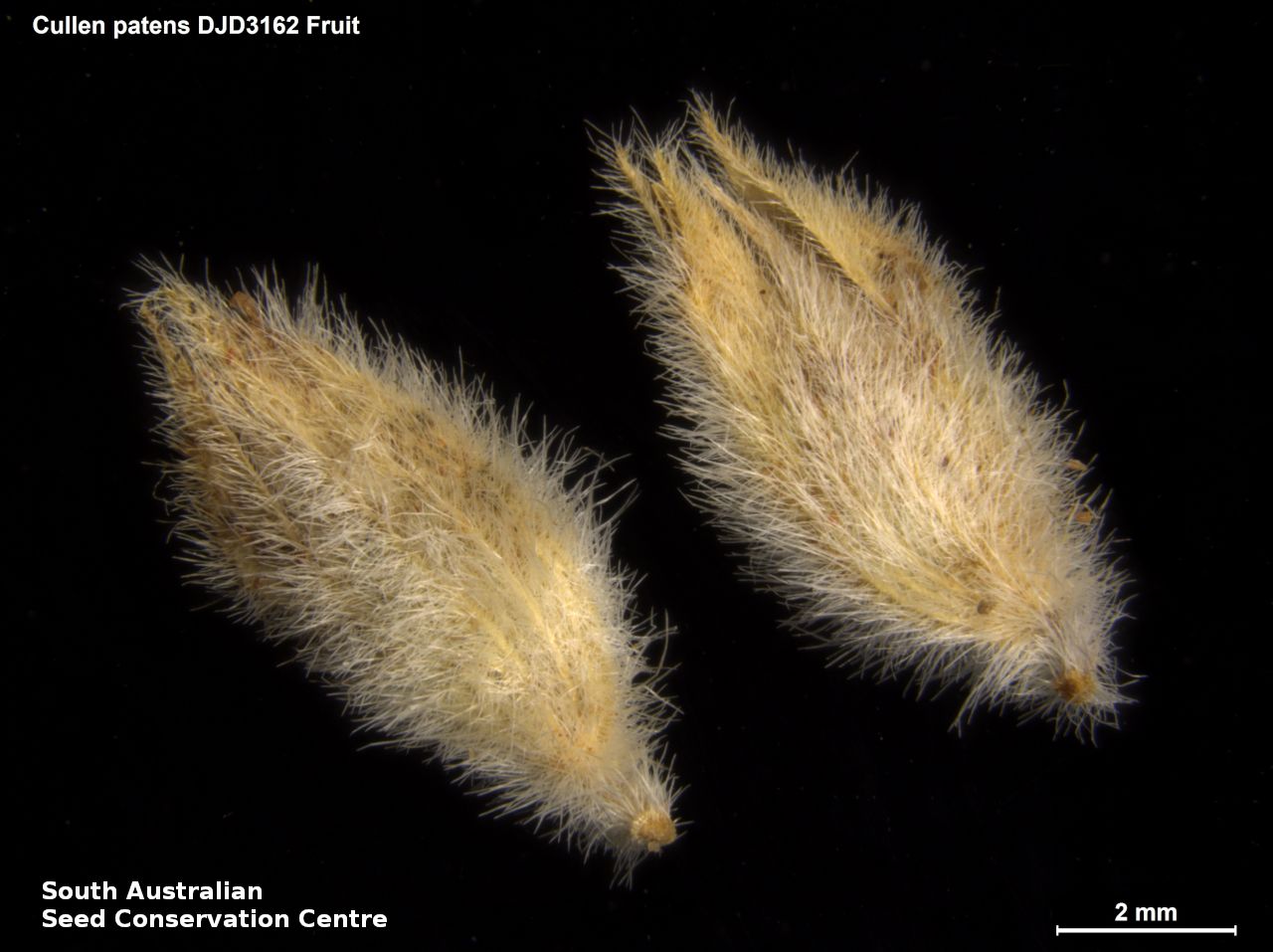
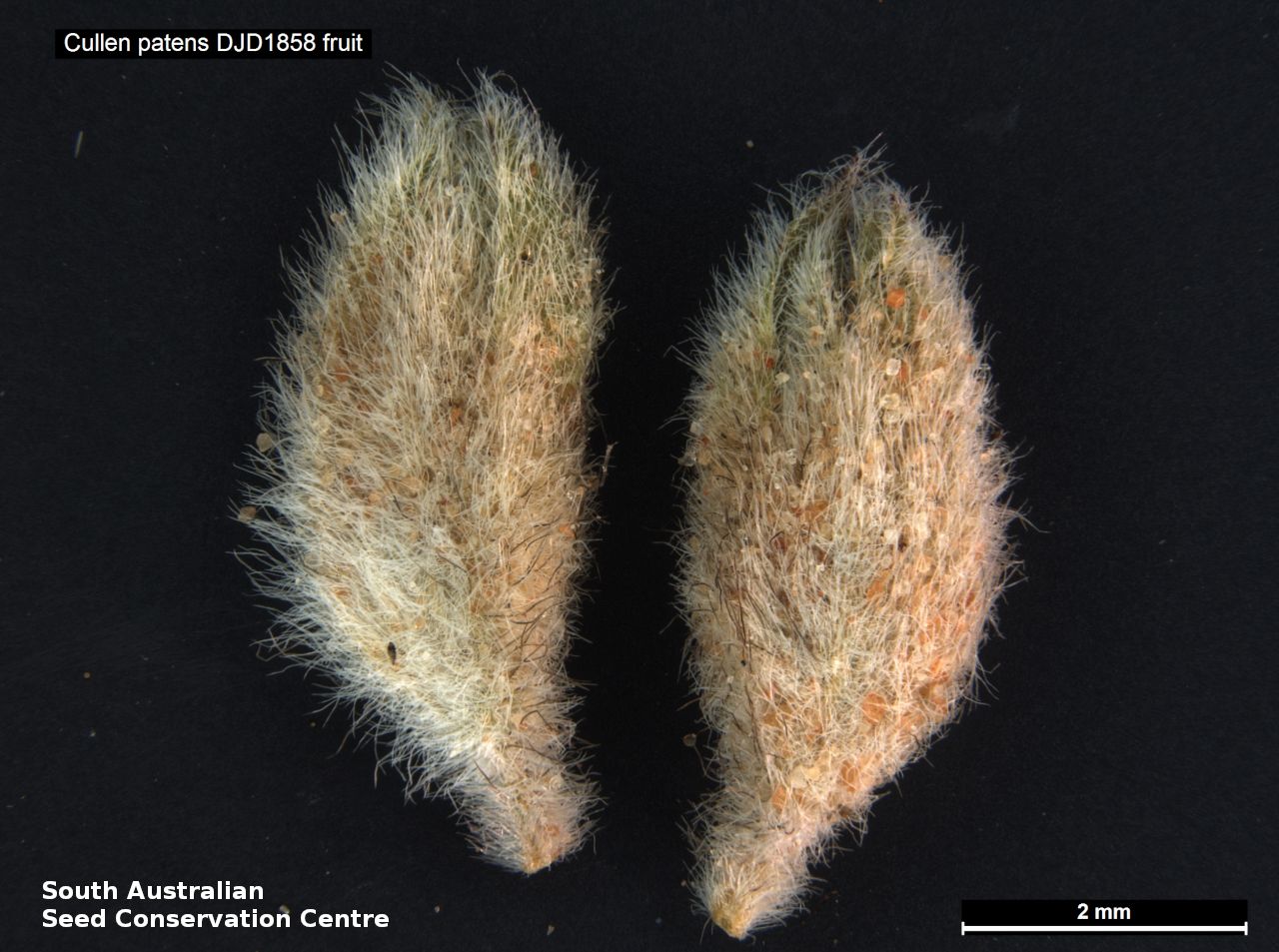
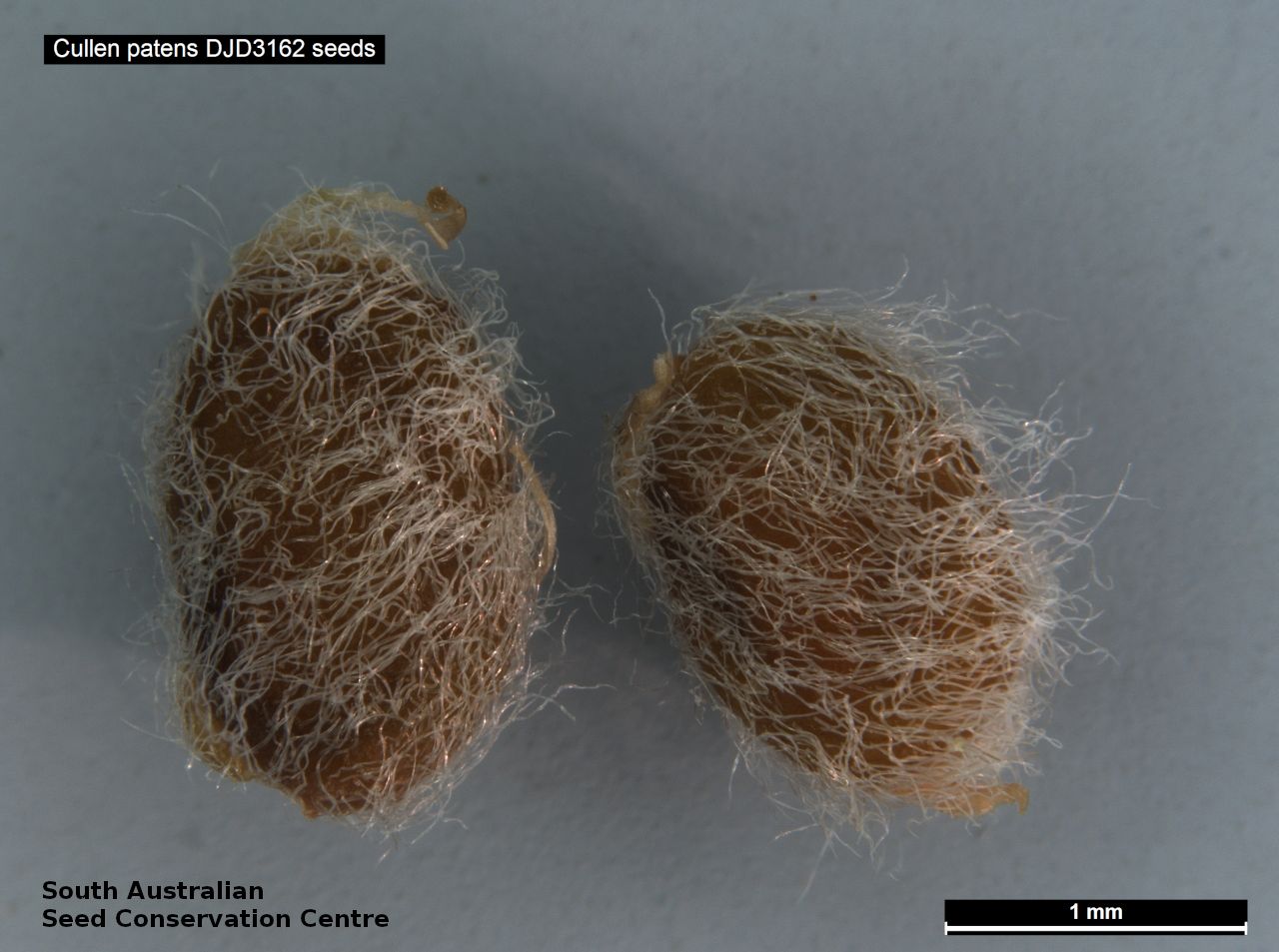
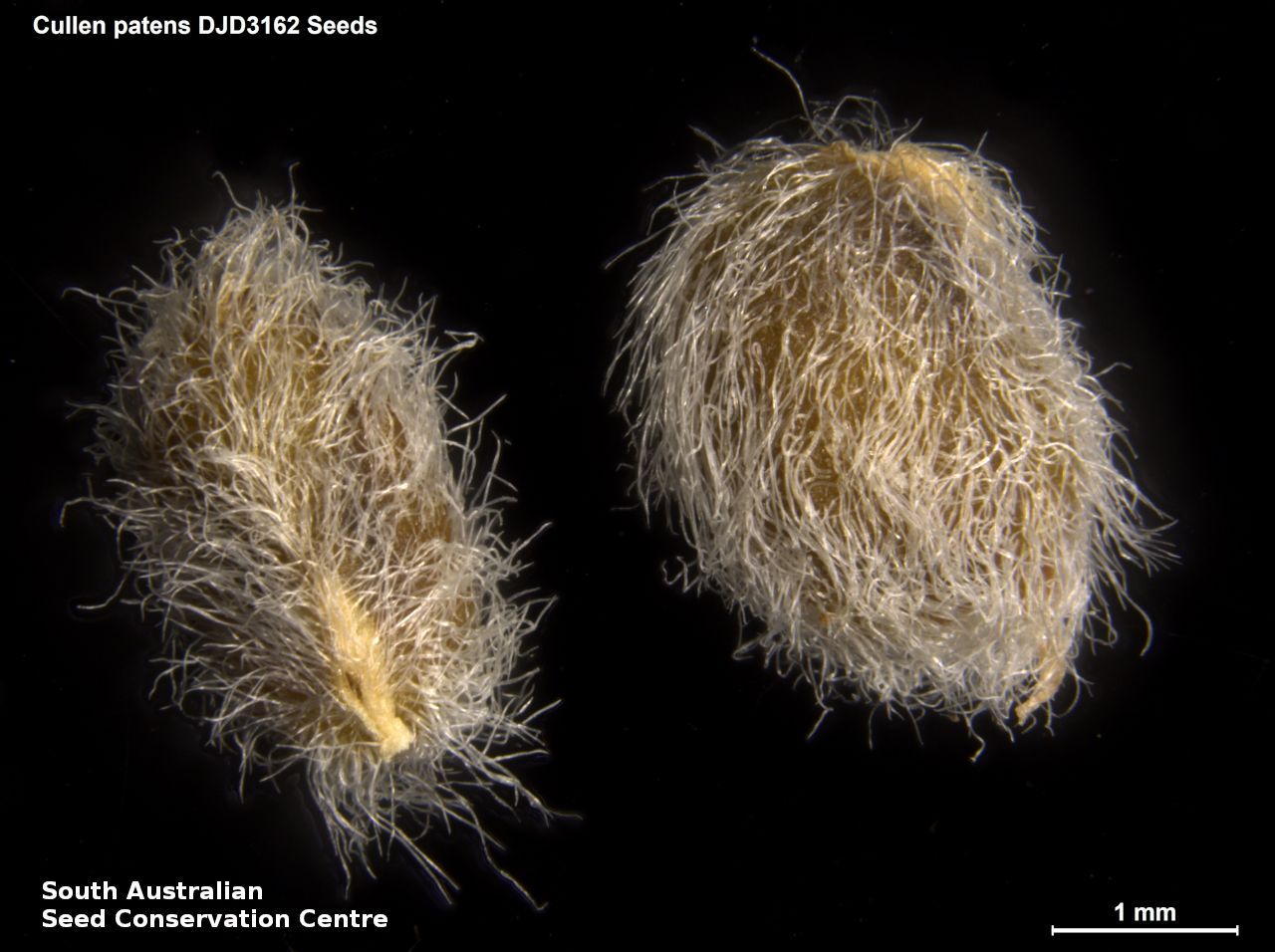
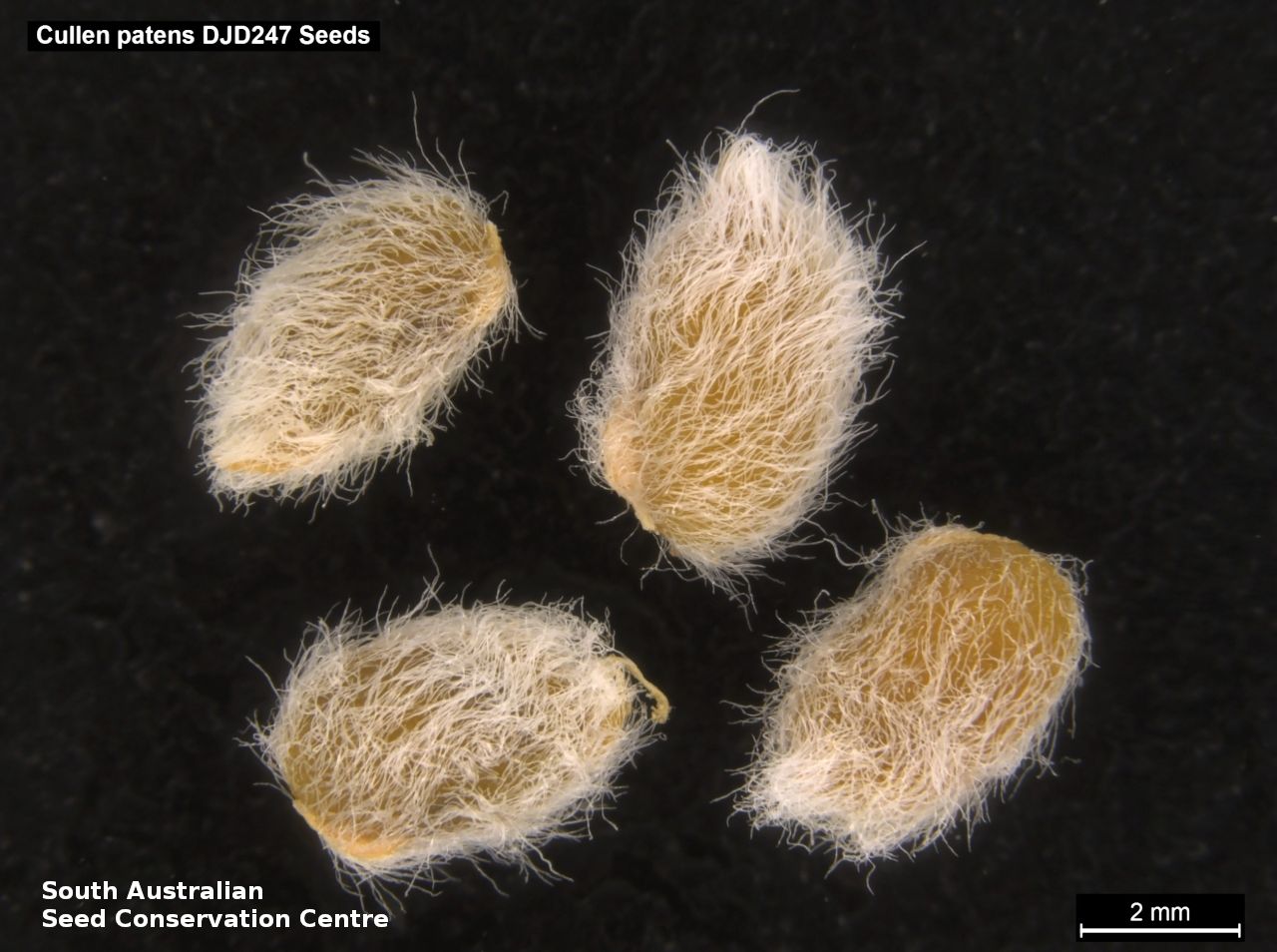
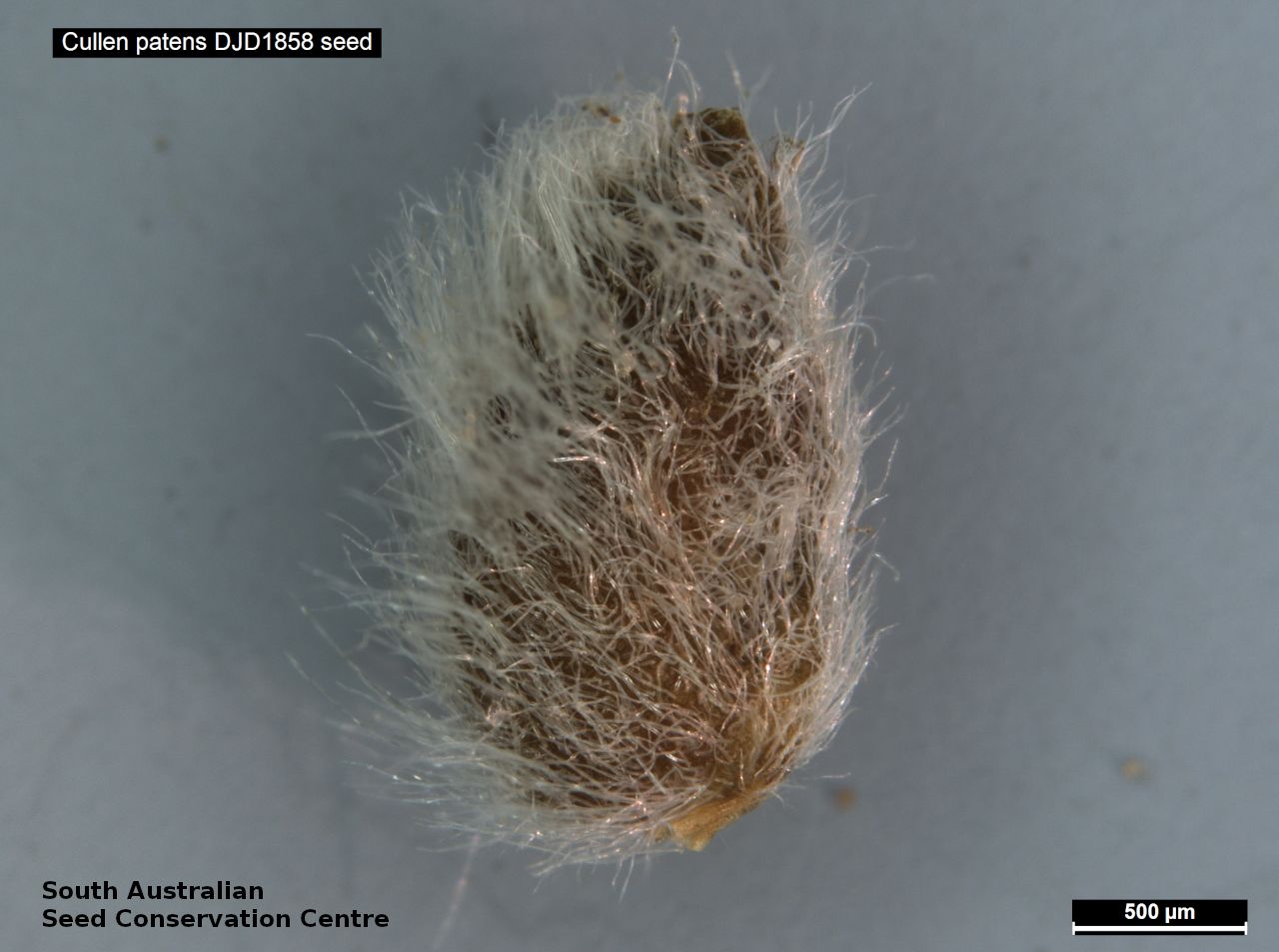
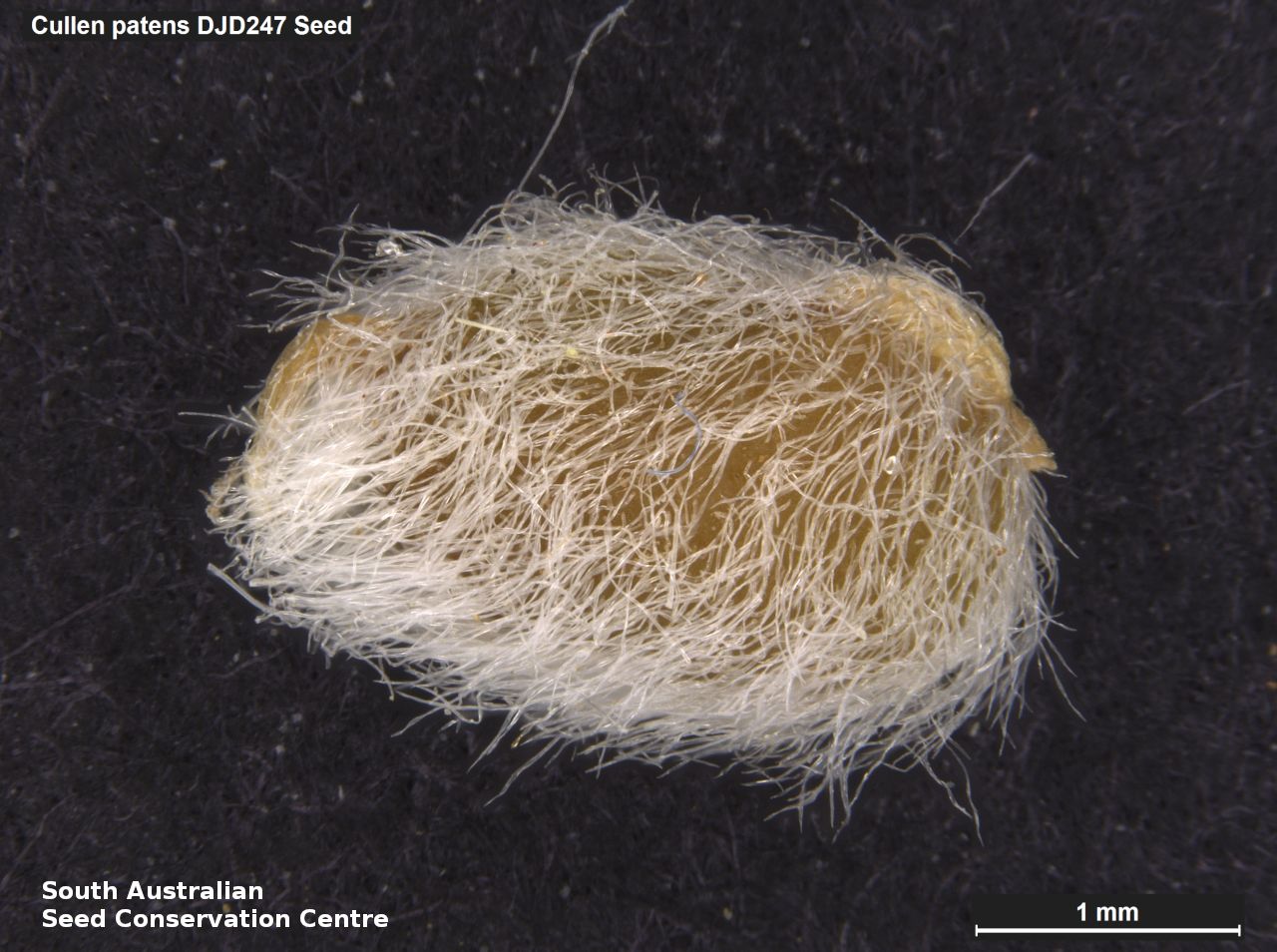

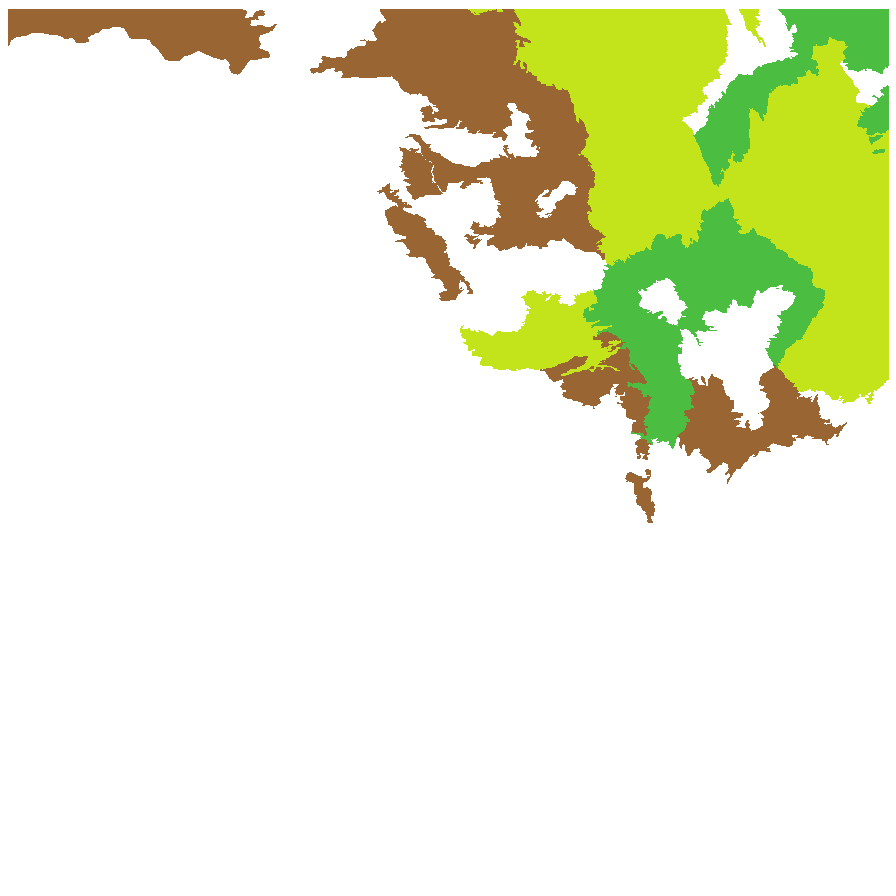
Botanical art
Prior names
Psoralea eriantha
Psoralea patens
Common names
Spreading Scurf-pea
Native Verbine
Etymology
Cullen named after William Cullen (1710-1790), a Scottish physician and chemist who lectured at the University of Glasgow on botany, among other things . Patens from the Latin 'patens' meaning to open, alluding to the spreading habit of the species.
Distribution and status
Found mainly in north-east South Australia, with a disjunct population on the Nullarbor and along the Murray growing on clay or sandy clay soil. Also found in all mainland States. Native. Common in South Australia. Rare in Victoria. Uncommon in Western Australia. Common in the other States.
Herbarium regions: Lake Eyre, Nullarbor, Gairdner-Torrens, Flinders Ranges, Eastern, Murray
NRM regions: Alinytjara Wilurara, South Australian Arid Lands, South Australian Murray-Darling Basin
AVH map: SA distribution map (external link)
Plant description
Perennial herb with stems erect or ascending at first but always prostrate at maturity; gland-dotted. Leaves to 10 cm long, pinnately 3-foliate; leaflets ovate to 4 cm long and 20 mm wide with margins toothed; upper surface glabrous or grey-pubescent; lower surface usually more densely hairy. Flower-spike to 9 cm long with pink or blue pea-flowers. Flowering between July and November. Fruits are blackish pod to 3 mm long, hairy with one seed inside. Seeds are orange-brown bean-shaped seed to 3 mm long and 2 mm wide, smooth surface and covered with long white hairs. Seed embryo type is bent.
Seed collection and propagation
Collect seeds between October and January. Collect maturing pods, those that are fat, turning black and contain a brown seed inside, by running your hands along the fruit-spikes. Place the pods in a tray and leave to dry for 1 to 2 weeks or until the pods begin to split. Then rub the dried pods to dislodge the seeds. Use a sieve to separate any unwanted material. Store the seeds with a desiccant such as dried silica beads or dry rice, in an air tight container in a cool and dry place. From one collection, the seed viability was high, at 90%. This species has physical dormancy that needs to be overcome for the seed to germinate (e.g. nicking or softening the seed coat).
| Location | No. of seeds (weight grams) | Number of plants | Date collected | Collection number Collection location | Date stored | % Viability | Storage temperature |
|---|---|---|---|---|---|---|---|
| BGA MSB | 11,000 (66.25 g) 11,000 (66.25 g) | 100+ | 25-Nov-2005 | DJD247 Eastern | 7-Aug-2006 | 90% | -18°C |
| BGA | 2,500 (8.97 g) | 21-Oct-2014 | DJD3067 Murray | 1-Jan-2016 | 100% | -18°C |
Number of plants: This is the number of plants from which the seeds were collected.
Collection location: The Herbarium of South Australia's region name.
% Viability: Percentage of filled healthy seeds determined by a cut test or x-ray.